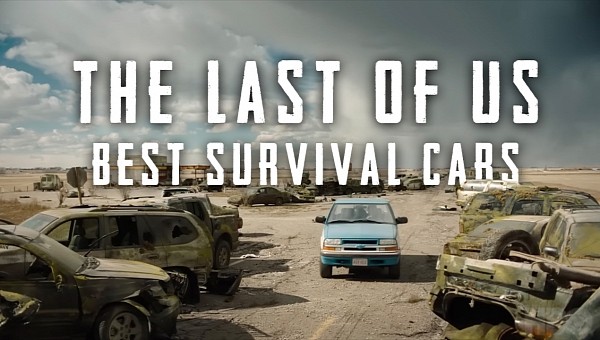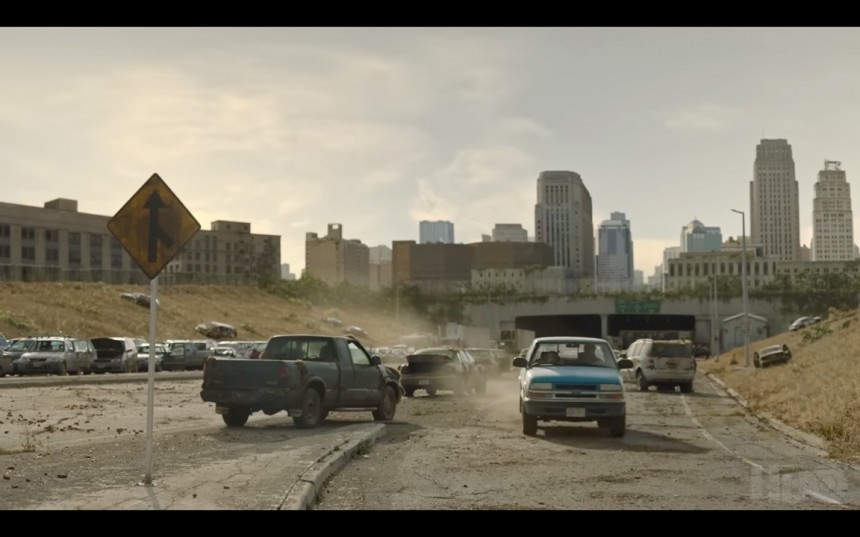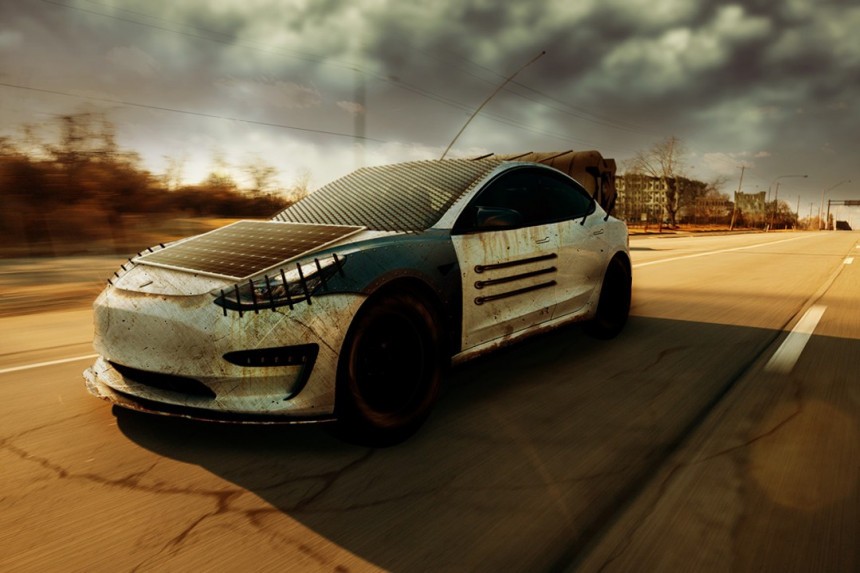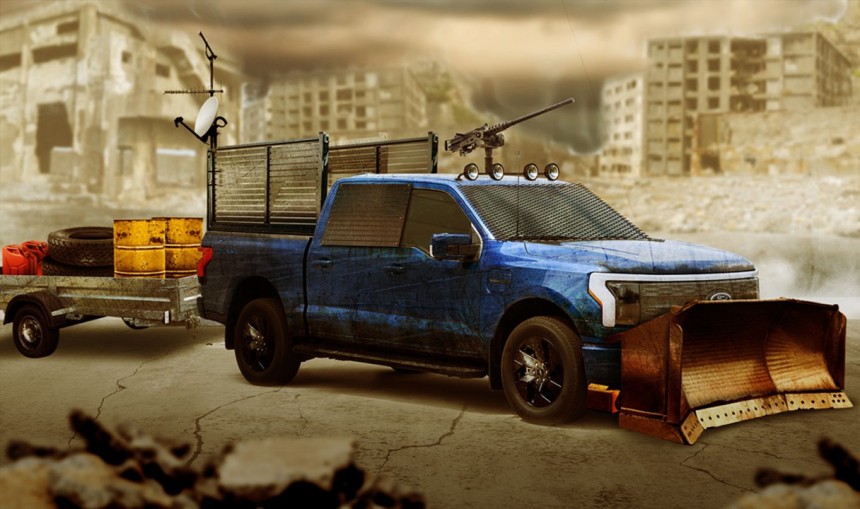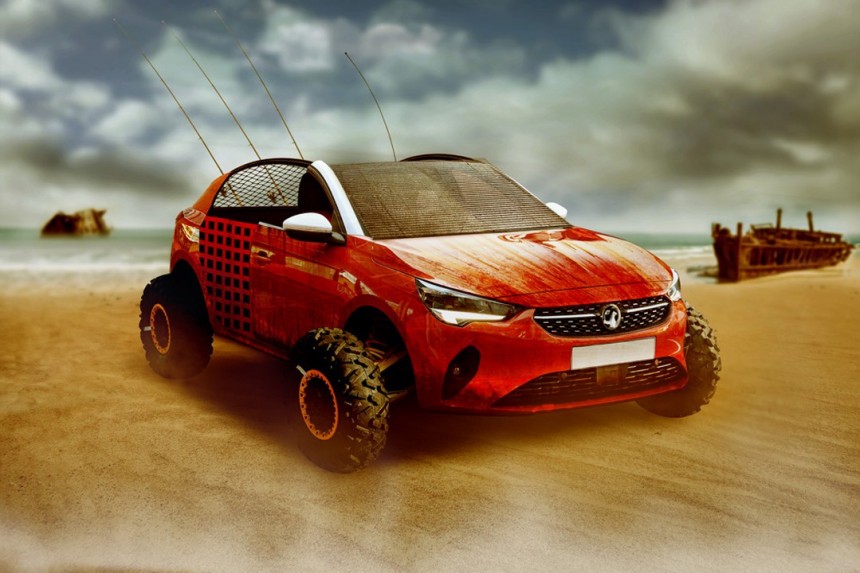There's no need for me to quaintly write about the millions upon millions of viewers that have taken to The Last of Us HBO show. However, we're not here to talk about how great Pedro Pascal and Bella Ramsey are as Joel and Ellie, but we're going to take a look at the best hypothetical cars for a post-apocalyptic scenario just like in TLOU. Zombies and clickers are optional.
Before we begin our little non-scientifical journey, let's get one thing straight! According to highly trained researchers, or just regular people that have put gas or diesel into containers and kept it there for more than 12 months, it seems like fuel tends to die off somewhere between three and twelve months.
Regular gas can last for as little as three months if it's stored in a sealed container at 68 degrees F (20 degrees C), and six months if you keep it warmer at 86F (30C).
As for diesel, it holds out a bit longer, between 6-12 months if it's stored properly. After that, it begins turning into goo basically, and while it might do the job in a crisis situation, it will also start wreaking havoc on those poor engine parts.
By this point, I'm imagining getting an earful about fuel stabilizers that can extend its life. You'll hear no ifs or butts from me because the stabilizers can increase the lifespan for up to three years.
The only thing about that is that The Last of Us takes place 20 years after the apocalypse hits, so unless a super-stabilizer has been invented in that fictional universe, all fuel has most likely turned into something akin to silly putty.
This brings us to our carefully planned scenario, the one where EVs are humanity's last great hope of carrying, towing, and transporting... well, stuff, people, and even your garden variety clickers or bloaters.
As a fun fact, the word zombie was forbidden on the set of the fourth episode because the flesh-eating monsters from the show are nothing of the sort. "We weren’t allowed to say the Z word on set. It was like a banned word. They were the Infected. We weren’t a zombie show," cinematographer Eben Bolter said.
Now, the next logical question would be how to generate electricity to charge EVs. Well, creative liberties would dictate something along the lines of solar panels, hydroelectric power plants just like in the show, or even smaller water turbines.
Then there are wind turbines, the OG steam engines, cow poop, and even human-shaped hamsters pedaling away 24/7 in shifts. Now that we established that gas won't work and we know how to generate electricity, there's still the matter of EV battery degradation over a 20-year span.
Unfortunately, we can't know all the data for sure, seeing as modern EVs aren't old enough to legally have a beer yet. But let's say a current-day electric vehicle kept in good-enough conditions will still work 20 years from now, apocalypse or not.
The final problem that might interfere with our imaginative experiment is a chronological one. The story from The Last of Us video game is the foundation upon which the show was built, and the year when everything went down was 2013. In the HBO show, the apocalypse hit in 2003.
So no matter which timeline you'd pick, modern-day EVs wouldn't have existed back then. But seeing as I'm the "dungeon master" of this lovely tale, I'll simply choose our 2023 reality as the starting point, because thankfully, Skynet or zomb... sorry, clickers, haven't taken over yet. At least at the time of writing.
As for the list of cars, we'll start with the best-selling EV nameplate of the hour, the Tesla Model 3. Currently starting at almost $43,000 for the RWD version, on U.S. soil, you would find it more often than others because it simply sold so many units.
This specific model is equipped with riot barriers, a long-distance radio, and a rainwater tank to quench that post-doomsday thirst.
Personally, I would have gone for more reinforcements on the front end, for when you have to ram creatures, bandits, and other unworldly things.
Then, we have the F-150 Lightning that might be all the rage in such harsh times. The base Pro variant currently starts at around $58,000 and has an estimated EPA range of 230 miles or 370 km. It also has a maximum reported payload of 1,952 lbs. (885 kg), and a towing capacity of 10,000 lbs. (4,536 kg).
Under the right conditions, this thing could help a community of survivors build a settlement or even a small village, given enough time. It can even power things on the go thanks to its bi-directional charging technology.
During winters, if you slap on a snow plow, this thing becomes more valuable than food, cigarettes, or booze. I imagine vices are still a thing, then.
The Hyundai Ioniq 5 is another great choice, especially because of its bi-directional charging technology. A great use for it would be boiling potentially contaminated water, and then making a nice cup of Joe for that morning pick-me-up.
You can clearly go camping, pull up a chair and watch old sitcoms out in the open, as long as you don't make any loud noises. Clickers navigate by echolocation, you see.
This Corsa EV has been turned into a beach buggy. Apparently, it should be good to go on a lot of types of surfaces on account of it being lightweight. Compared to the F-150, this would indeed be more nimble around obstacles.
The Corsa-e could be used like a hunter-gatherer vehicle, able to quickly move over sand and carry back freshly-caught fish. The fact that it's silent wouldn't scare the aquatic creatures either.
Last on our apocalyptic list is the Rimac Nevera for quick escapes. That's IF you manage to come across such a rare thing. Not to mention the fact that long and empty stretches of road would be a fantasy at this point because of the traffic jams created by people trying to skip town. But let's imagine that you'd find such an open road.
This reinforced baby has no less than 1,888 hp (1,914 ps) with 1,740.6 lb-ft (2,360 Nm) of torque. Basically, it becomes a sickle on wheels if you get enough speed going on a smooth stretch of tarmac.
The electric sword on wheels can hit the 256 mph mark (412 kph) and it can go from 0-62 mph (0-100 kph) in less than two seconds. While I can't think of a real practical use for this thing, maybe taking turns in it like in an amusement park would be enough to keep morale high.
This would cover the entire roster of EVs that might work 20 years into a cordyceps-infested world. You have everything from pickups to hypercars to suit all of your survival needs. It goes without saying that this isn't at all a scientific exercise by any stretch of the imagination, but more of a fun creative thought experiment.
If you don't know what to do with yourself after the season finale hits, there's always The Last of Us Part I video game you can replay over and over and over on PlayStation, or starting from March 28 on PC.
Regular gas can last for as little as three months if it's stored in a sealed container at 68 degrees F (20 degrees C), and six months if you keep it warmer at 86F (30C).
As for diesel, it holds out a bit longer, between 6-12 months if it's stored properly. After that, it begins turning into goo basically, and while it might do the job in a crisis situation, it will also start wreaking havoc on those poor engine parts.
By this point, I'm imagining getting an earful about fuel stabilizers that can extend its life. You'll hear no ifs or butts from me because the stabilizers can increase the lifespan for up to three years.
This brings us to our carefully planned scenario, the one where EVs are humanity's last great hope of carrying, towing, and transporting... well, stuff, people, and even your garden variety clickers or bloaters.
As a fun fact, the word zombie was forbidden on the set of the fourth episode because the flesh-eating monsters from the show are nothing of the sort. "We weren’t allowed to say the Z word on set. It was like a banned word. They were the Infected. We weren’t a zombie show," cinematographer Eben Bolter said.
Now, the next logical question would be how to generate electricity to charge EVs. Well, creative liberties would dictate something along the lines of solar panels, hydroelectric power plants just like in the show, or even smaller water turbines.
Unfortunately, we can't know all the data for sure, seeing as modern EVs aren't old enough to legally have a beer yet. But let's say a current-day electric vehicle kept in good-enough conditions will still work 20 years from now, apocalypse or not.
The final problem that might interfere with our imaginative experiment is a chronological one. The story from The Last of Us video game is the foundation upon which the show was built, and the year when everything went down was 2013. In the HBO show, the apocalypse hit in 2003.
So no matter which timeline you'd pick, modern-day EVs wouldn't have existed back then. But seeing as I'm the "dungeon master" of this lovely tale, I'll simply choose our 2023 reality as the starting point, because thankfully, Skynet or zomb... sorry, clickers, haven't taken over yet. At least at the time of writing.
This specific model is equipped with riot barriers, a long-distance radio, and a rainwater tank to quench that post-doomsday thirst.
Personally, I would have gone for more reinforcements on the front end, for when you have to ram creatures, bandits, and other unworldly things.
Then, we have the F-150 Lightning that might be all the rage in such harsh times. The base Pro variant currently starts at around $58,000 and has an estimated EPA range of 230 miles or 370 km. It also has a maximum reported payload of 1,952 lbs. (885 kg), and a towing capacity of 10,000 lbs. (4,536 kg).
During winters, if you slap on a snow plow, this thing becomes more valuable than food, cigarettes, or booze. I imagine vices are still a thing, then.
The Hyundai Ioniq 5 is another great choice, especially because of its bi-directional charging technology. A great use for it would be boiling potentially contaminated water, and then making a nice cup of Joe for that morning pick-me-up.
You can clearly go camping, pull up a chair and watch old sitcoms out in the open, as long as you don't make any loud noises. Clickers navigate by echolocation, you see.
The Corsa-e could be used like a hunter-gatherer vehicle, able to quickly move over sand and carry back freshly-caught fish. The fact that it's silent wouldn't scare the aquatic creatures either.
Last on our apocalyptic list is the Rimac Nevera for quick escapes. That's IF you manage to come across such a rare thing. Not to mention the fact that long and empty stretches of road would be a fantasy at this point because of the traffic jams created by people trying to skip town. But let's imagine that you'd find such an open road.
This reinforced baby has no less than 1,888 hp (1,914 ps) with 1,740.6 lb-ft (2,360 Nm) of torque. Basically, it becomes a sickle on wheels if you get enough speed going on a smooth stretch of tarmac.
This would cover the entire roster of EVs that might work 20 years into a cordyceps-infested world. You have everything from pickups to hypercars to suit all of your survival needs. It goes without saying that this isn't at all a scientific exercise by any stretch of the imagination, but more of a fun creative thought experiment.
If you don't know what to do with yourself after the season finale hits, there's always The Last of Us Part I video game you can replay over and over and over on PlayStation, or starting from March 28 on PC.
